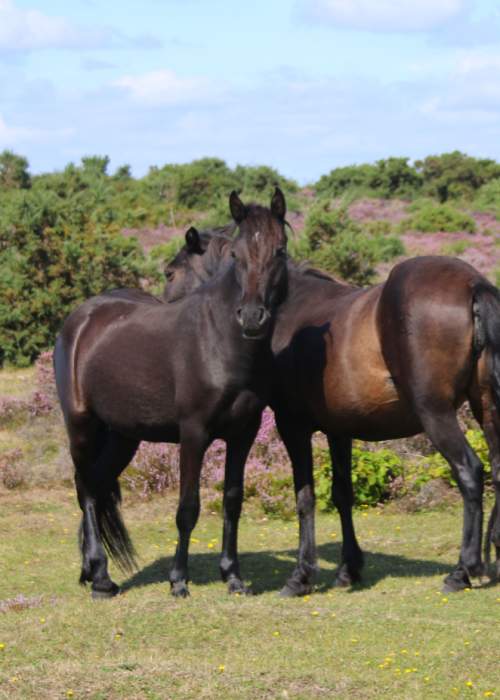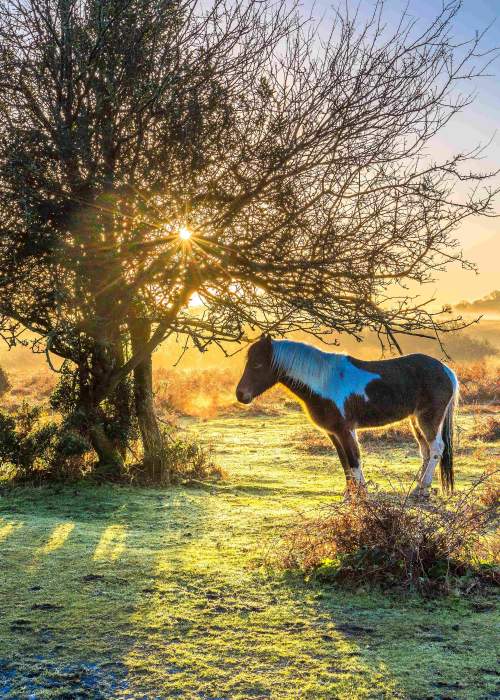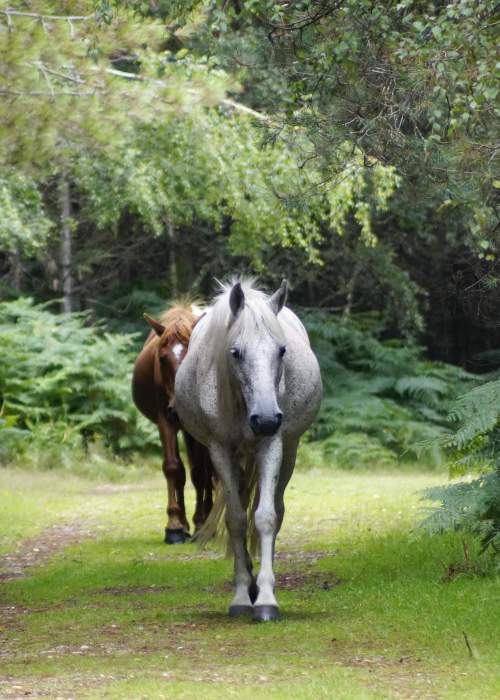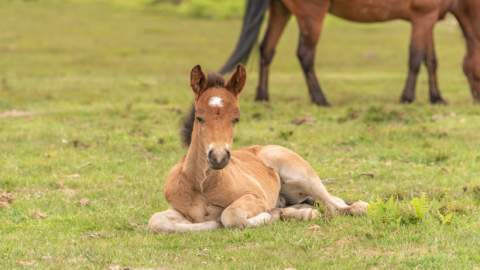
New Forest Ponies
When you visit the New Forest there are a group of about 5,000 locals that you can't but help noticing. They have been hanging around for about 2,000 years and what they don't know about the forest is not worth knowing. We are talking about the wonderful New Forest Ponies of course!
All of the ponies found in the forest are wild in the sense they can roam freely but in fact they are owned by New Forest Commoners.
The commoners have the right to graze their ponies and cattle on the open forest throughout the year. It is the animals’ grazing which helps to keep the New Forest’s landscape and rare species which you can enjoy today. The ancient tradition of commoning dates back from before the days when William the Conqueror made this area his private hunting reserve and imposed strict laws on the locals. In return for this, the locals were given the rights to graze their animals on the ‘common’ (this being the land which is now known as the New Forest). Think of the New Forest as one large farm!
If you have ever wondered why the grass is so neat and tidy here in the New Forest it is thanks to our ponies and cows! In fact, their grazing and browsing supports rare plant species including wild gladiolus and chamomile. This in turn helps the wider ecosystem and encourages other species to thrive here including the Dartford warbler and the southern damselfly. In fact, the southern damselfly lays its eggs in the water-filled hoofprints of ponies (and cattle) nearby to the streams that pass through the New Forest.
Each year, the ponies are rounded up in what are called drifts. Over thirty of these drifts take place during the summer and autumn each year giving the commoners a chance to check the health of their animals and wean and handle the foals.
Read on to discover some useful information about these iconic animals.
Where can I spot the New Forest ponies?
You will find New Forest ponies dotted all around our National Park. With around 5,000 of them, it won’t be too long until you spot one. There is plenty of nutritious food available for the ponies and you will often find them grazing across the open moorland in small groups.
You may see some of our ponies have silver collars on them. When the ponies are rounded up as part of the drift, some of them have these reflective collars put on them to help make them more visible at night time. However, not all of them are caught and some are good at losing them! If you are driving at night and see a reflective collar on a dark road then take it as an indication that there are animals about, some of which you may not be able to see so easily, so please drive with caution.
What are the characteristics of a New Forest pony?
A combination of colour and 'markings' such as the owner's brand, make each pony easily recognisable, particularly to the practised eye. The feral New Forest pony is on the native breeds ’at risk’ register.
The upper height for a New Forest pony is 148cm, but there is no lower limit on height. The most common colours of New Forest ponies. are brown, bay and chestnut.
The gestation period for New Forest mares is approximately 11 months. Stallions are presently turned out for 6 weeks in May and June and, as a result, New Forest foals are born in the spring and summer months and truly bring the Forest to life.
The New Forest ponies are semi-feral and therefore generally don’t like to be handled. However, as a breed, ‘New Foresters’ have gentle temperaments and make excellent family riding ponies. In fact, ponies sold at the Beaulieu Road sale yard have gone on to win top national competitions.
Who looks after the ponies?
All the animals depastured on the Forest are owned by commoners, and it is their responsibility to ensure that their ponies are in good health. However, five 'agisters’ are employed by the Verderers to watch over the forest stock and ensure that their owners meet the requirements of the Verderers in respect of stock welfare. They attend road accidents and other incidents involving Commoners' animals. They also deal with injured animals at the scene and humanely destroy the animal if necessary.
Agisters organise the construction and ongoing maintenance of stock pounds within their area, they arrange and manage the rounding up of ponies. When Agisters have collected marking fees from Commoners, which is usually done in the New Year; they will clip the pony's tail to a set pattern to show proof of payment and identify in which agister’s area the owner lives.
At present stallions are turned out onto the forest between May and June to breed with the mares. The Verderers decide which registered stallions are allowed on to the forest to breed. To keep the forest-bred stock healthy, stallions are moved every three to four years.
Important information on New Forest ponies
The New Forest National Park is a wonderful place to visit and you can help it stay that way by being a Forest friendly visitor.
For their safety and your own please don't touch the animals - although owned and cared for by local people called commoners, they are unpredictable and best treated as wild. Please don’t feed or pet them; there is plenty of natural food and it’s best that they don’t come to rely on people’s attention. They may look friendly but they can bite and kick, especially ponies with foals.
Keep your distance! Remember, too, that these animals are not tame - the gentlest looking pony can also kick and bite and children are particularly vulnerable to them.
Sadly, many animals are killed or injured by car drivers. Ponies (and cattle) have not road sense and are likely to cross in front of traffic at any time. Please remember animals have the right of way on all the roads in the Forest. There is a maximum speed limit of 40mph on unfenced Forest roads. The use of reflective collars on ponies is a measure some Commoners use to attempt to reduce the number of accidents involving ponies; however not all of the ponies and few cows have these collars so drive with extreme care at night time.
If you are involved in a road traffic accident with a pony it is an offence not to report it. Make sure you carry an animal emergency hotlines card - giving you all the contacts you may need.



